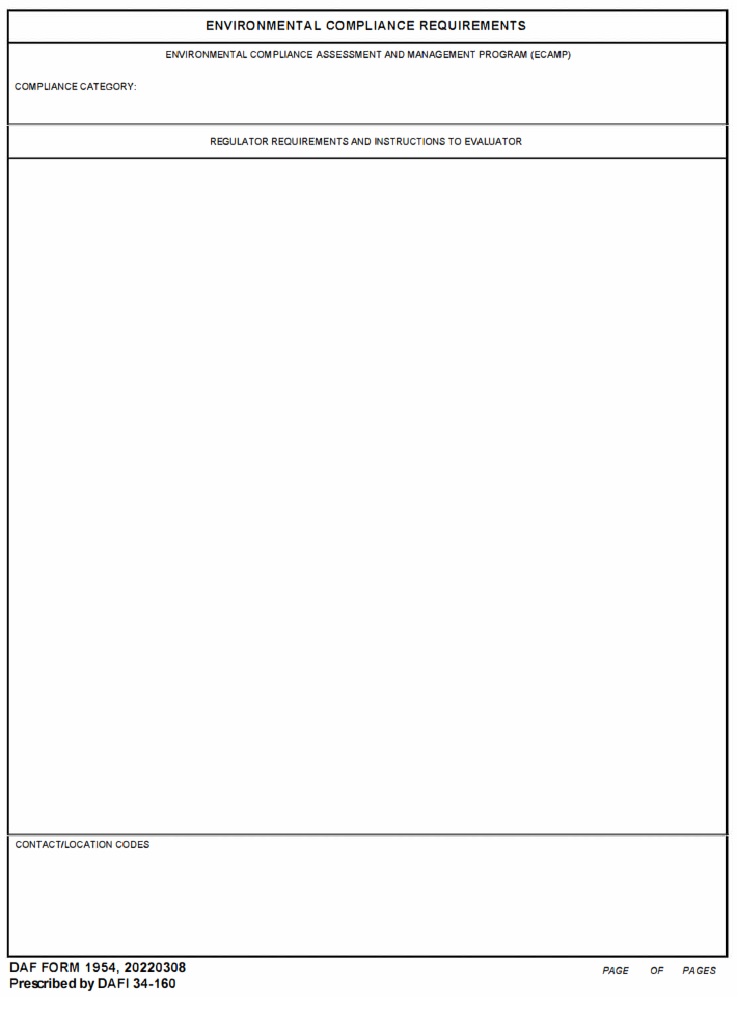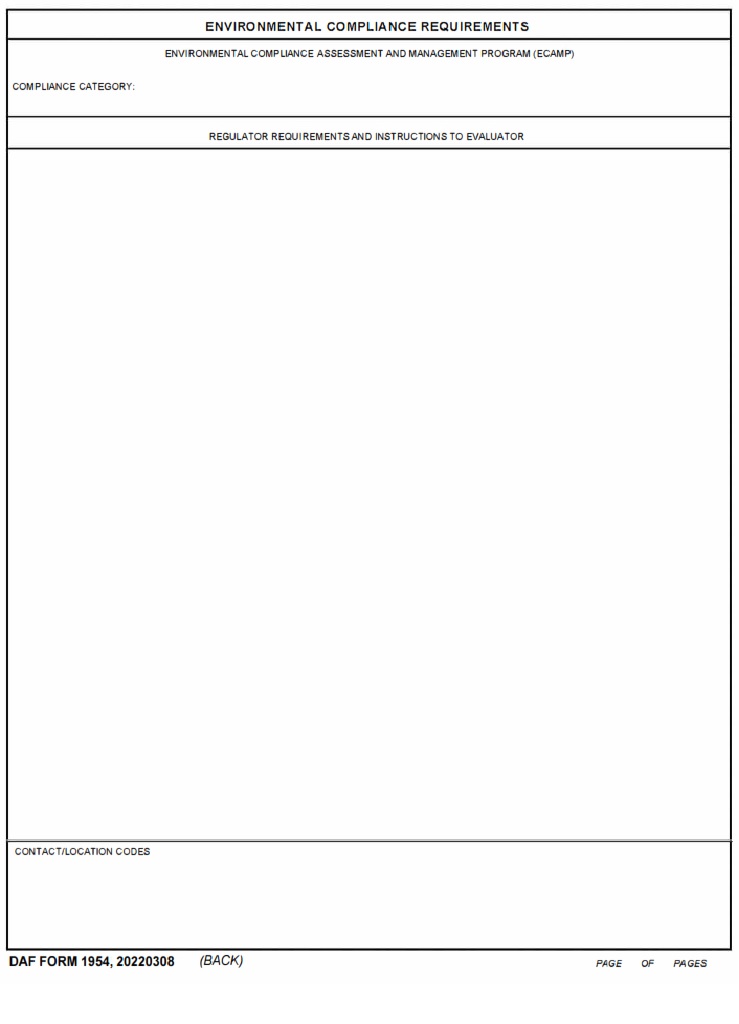AF-FORMS.COM – AF Form 1954 – Environmental Compliance Requirements – AF Form 1954 is an important document for any organization or facility that seeks to comply with environmental regulations. This form requires detailed information on the facility’s current and past compliance history. It also outlines specific requirements that must be met in order to maintain compliance with environmental regulations. AF Form 1954 is an essential element of any organization’s overall environmental compliance program and should be completed thoroughly and accurately.
Download AF Form 1954 – Environmental Compliance Requirements
| Form Number | AF Form 1954 |
| Form Title | Environmental Compliance Requirements |
| Edition Date | 3/8/2022 |
| File Size | 121 KB |
AF-Form-1954-Environmental-Compliance-Requirements.pdf (25 downloads )
What is an AF Form 1954?
AF Form 1954 is a United States Air Force form used to document environmental compliance requirements. It outlines the necessary steps and considerations for a project or activity in order to evaluate, assess and mitigate any potential negative impact on the environment. This includes determining if there are any special requirements or restrictions due to local, state, or federal regulations that need to be addressed. Additionally, AF Form 1954 records details regarding hazardous waste management; noise abatement; air quality control; water conservation; wildlife protection; historic preservation; pollution prevention, and recycling protocols. The form also requires an assessment of the proposed facility’s impact on wetlands, endangered species, migratory birds, and other natural resources. This information is then compared with the applicable laws and regulations in order to ensure compliance with those standards in regard to resource conservation and the protection of human health and safety.
Where Can I Find an AF Form 1954?
AF Form 1954 is available for download on the Air Force e-Publishing website. The form is located in the AFI 33-360 (Air Force Records Management Program) section under “Environmental Compliance” documents. To access the form, users must first log in to their official Air Force portal accounts. Once logged in, they can locate and open the document with a compatible PDF reader.
AF Form 1954 contains detailed guidelines on environmental compliance requirements that all members of the Air Force are required to follow. It includes information such as definitions and descriptions of hazardous materials, guidance on reporting requirements, procedures for responding to environmental incidents or spills, regulations pertaining to air emissions management, and more. Additionally, it provides instructions on how to complete an AF Form 1954 if one is required by environmental regulatory statutes or contracts.
AF Form 1954 – Environmental Compliance Requirements
AF Form 1954 outlines environmental compliance requirements for the Air Force. This form is designed to ensure all personnel adheres to the standards for environmental protection and stewardship, as outlined by the Department of Defense and other federal agencies. All activities conducted on or near Air Force installations must comply with applicable regulations, laws, policies, and procedures pertaining to safety, public health, wildlife conservation, and natural resources management.
The form includes a variety of information regarding how personnel should approach various responsibilities. For example, it outlines appropriate methods for waste disposal and hazardous material management in accordance with relevant state law directives. It also provides guidance on how to protect sensitive ecosystems around installations from human-caused impacts such as air pollution or soil contamination. Additionally, it requires that personnel are aware of any endangered species living within the installation’s boundaries and take steps to protect them if necessary.
Finally, AF Form 1954 specifies that personnel must be aware of any potential cultural artifacts in the area before undertaking an activity that could disturb them. It also emphasizes that any archaeological sites found during operations should be reported immediately so they can be properly protected from damage or destruction.

